SHUT UP!
SHUT UP!
bdes2028 honours intensive 2
lecturer: ross anderson
tutor: thomas stromberg
july intensive, 2023
melbourne studio
group project with harry culican
“...how futile are all his efforts. He is still forcing his way through the private rooms of the innermost palace. Never will he win his way through.”
– Franz Kafka, An Imperial Message
Melbourne/Naarm is characterised by its strict grid within the CBD. Neatly organised city blocks of apartments and high streets rhythmically puncture the landscape and assimilate the architecture of the place into a logic of its own. Yet amidst the order, there is city is eclecticism and surprise. The laneways and alleys of Melbourne draw visitors and residents in the millions: these supplementary, secondary circulation spaces become diffused, ambiguous zones of commercial business and democratic interaction. The accommodation which occurs between the public and private generates places which constantly evolve in their programming and entice individuals to enter and shape it. They are bridges in their spirit and character, connecting separate entities and ways of experiencing the city.
So why is the State Library so silent?
From the manner in which one speaks, to the way in which one walks across the floor: the State Library regulates behaviour in a manner in which the rowdiness and liveliness of the street is unseen and unheard. And one cannot move through the Library without finding dead-ends, staff-only signs, keycard interfaces and bulky security men pushing one out the door. For a so-called “public” library – one of the first in the world – that prides itself on its accessibility, there is much which discourages entry and free movement.
Indeed, you are told to shut up.
SHUT UP is an irreverent intervention penetrating from Little Lonsdale Street into the Dome. A continuous red ramp invites the public into the most silent and most sacred spaces of the State Library, and are encouraged to speak freely and walk wherever within. Drawing programmatic inspiration from the laneways, the enclosed space becomes an empty canvas which can be utilised however one desires.
An alternative form of knowledge sharing is promoted as individuals begin to engage in oral storytelling, conversation and debate, contrasting with the formalistic and conventional means of inscription characteristic of Western libraries. Places to sit, perch on and orate from pepper the floor space, frustrating a clear axis of movement from the ground right to the top.
And what of those in the Library, who are met with a brazen, shameless red ramp cutting through the building’s hallowed halls? Franz Kafka’s stories comes to mind: they are both the man Before the Law desperate to enter and the messenger with An Imperial Message desperate to leave; a desperation to move to wherever it may be with a purpose, a story, an idea. They are enticed to enter this red, rebellious space, but cannot do so without exiting the austerity of the Library first. Its wide entry and loud colour activates the utilitarian passage of Little Lonsdale, sharing and celebrating the mess of Melbournian streetlife.
But this is still the State Library. No matter how loud and singular the intervention may be, it must accommodate and respect the place it has forced its way into. Thus this is a bridge to nowhere. And the chatter of the public is wound up in an ever-present red polypropylene, all shut up. Perhaps it is the activity, and not the destination, of the bridge which matters...

a defaced library pamphlet
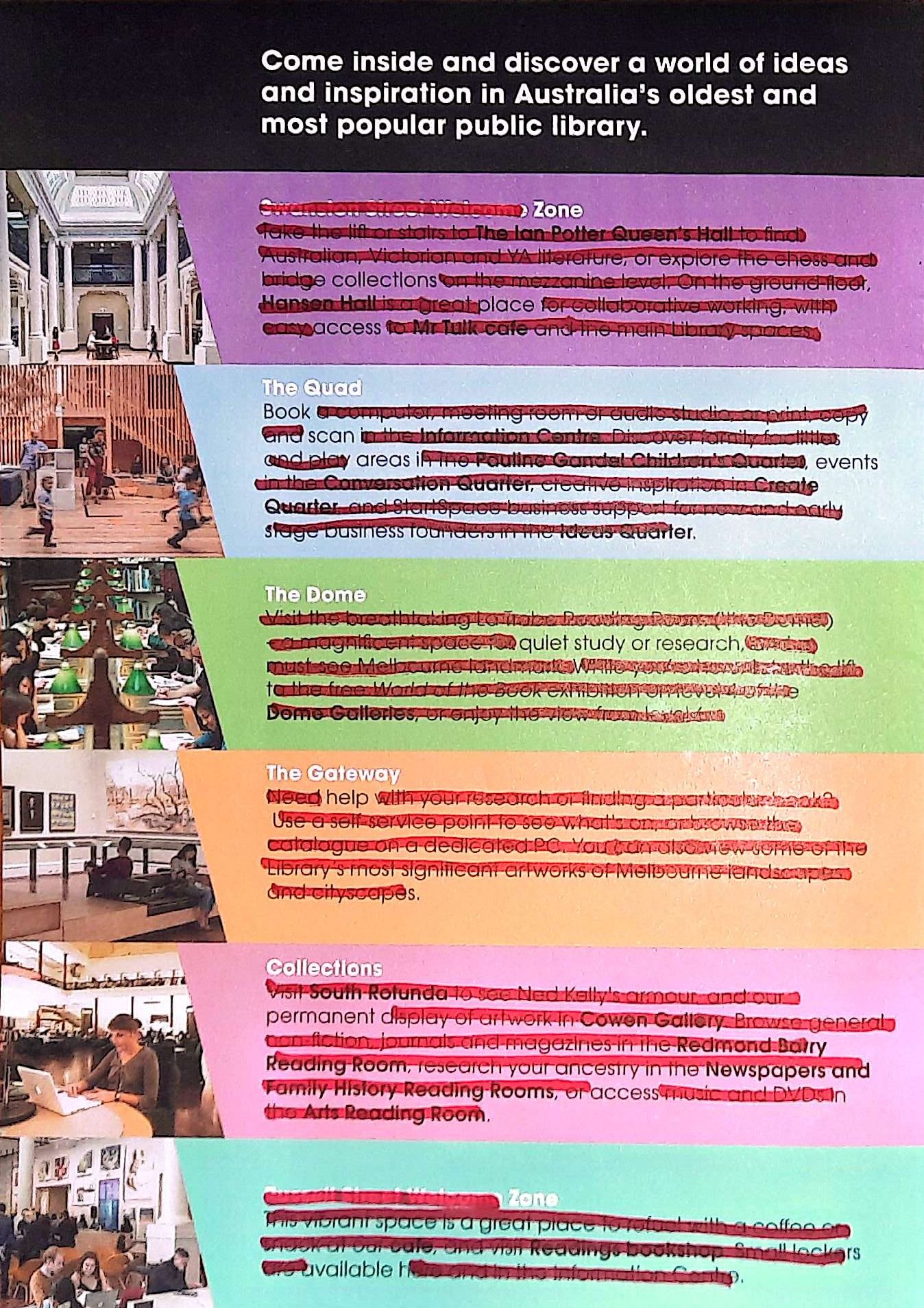
a defaced library pamphlet
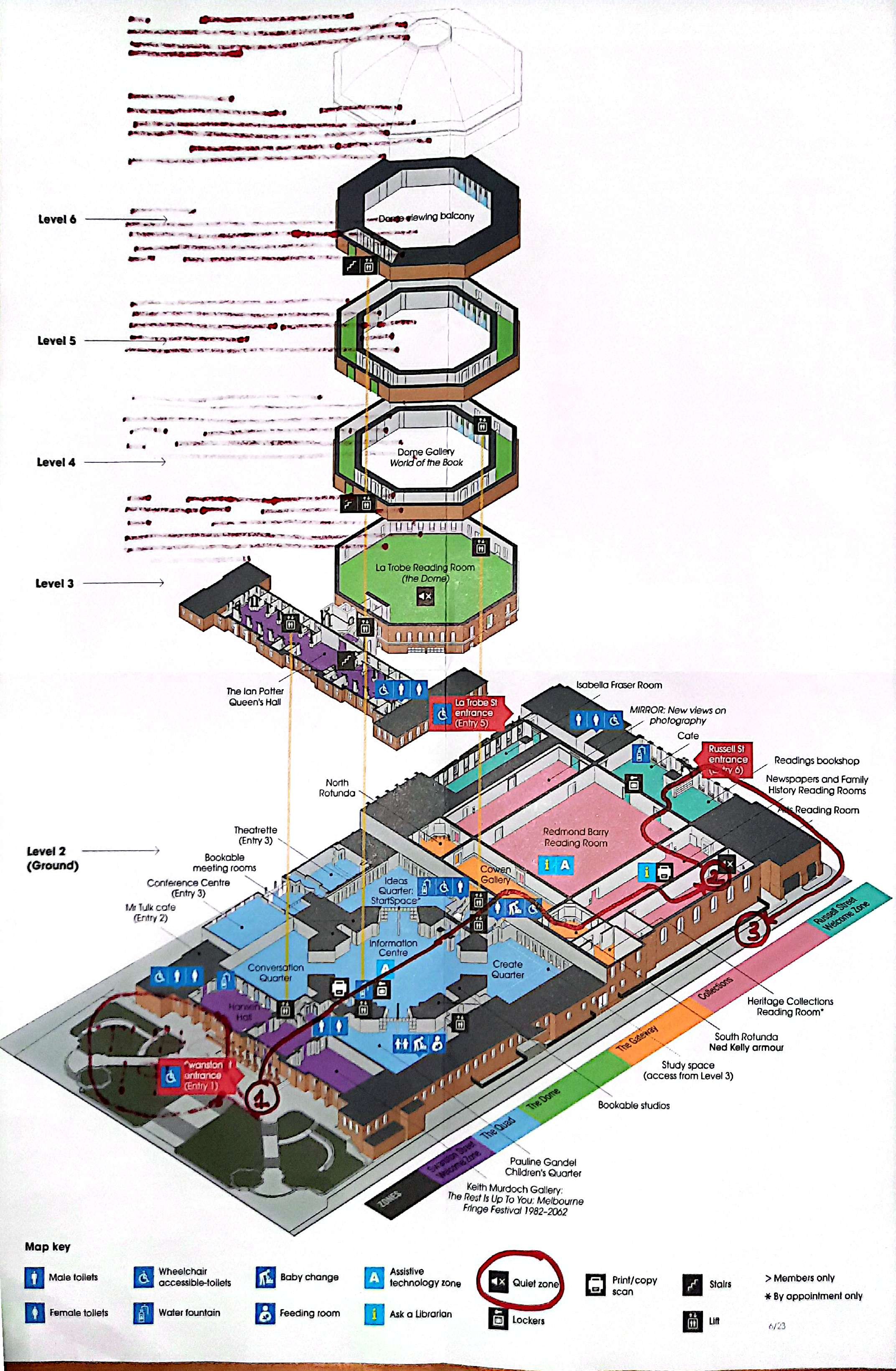
a defaced library pamphlet
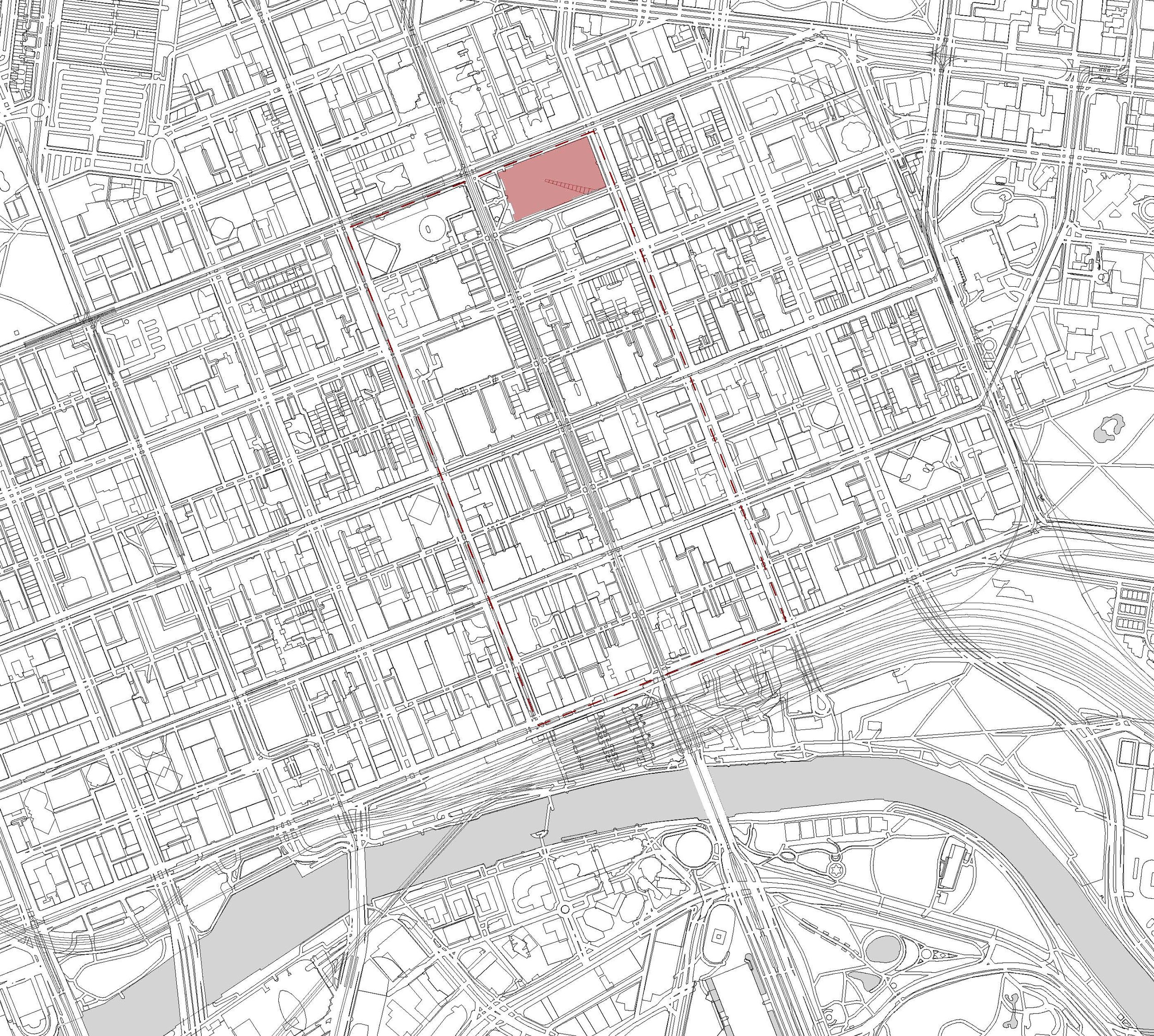
1:5000 location plan

a defaced library periodical

conceptual collage: no talkin' in the library!

conceptual collage: let us in

journal sketch principles
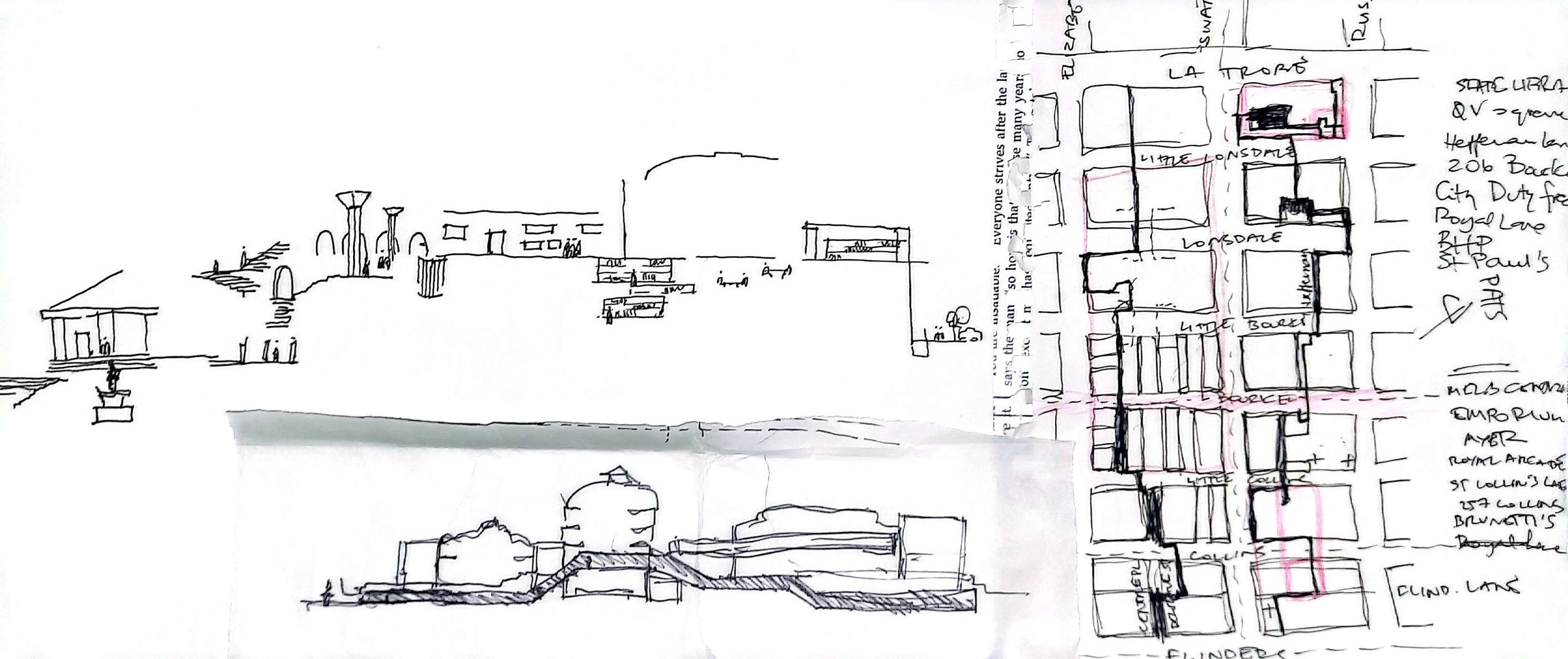
journal sketch site studies

1:1000 axonometric

1:200 hybrid plan

1:200 hybrid section
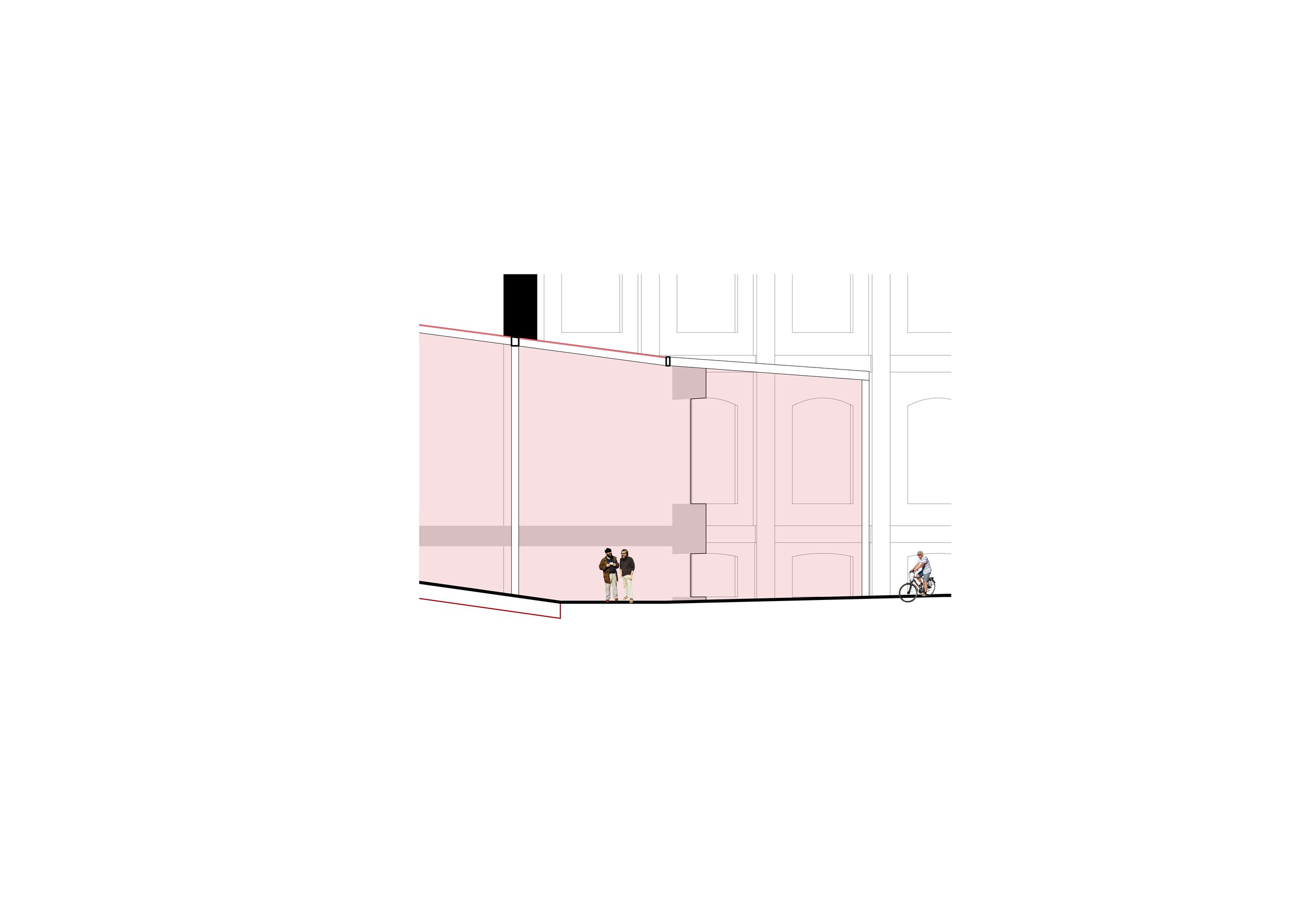
1:100 short section detail

1:100 short section detail

1:100 short section detail

exterior perspective from little lonsdale st

perspective from silent room
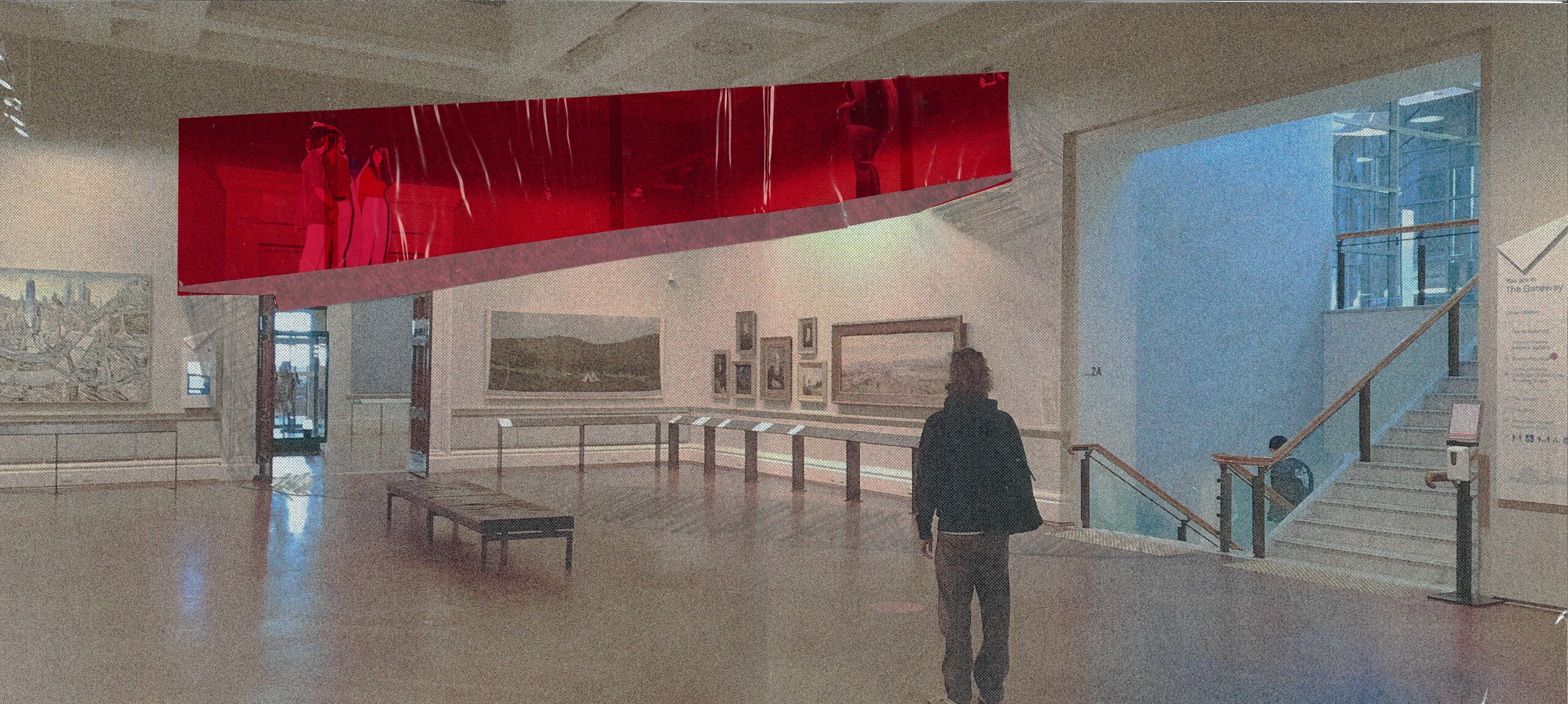
perspective from gallery
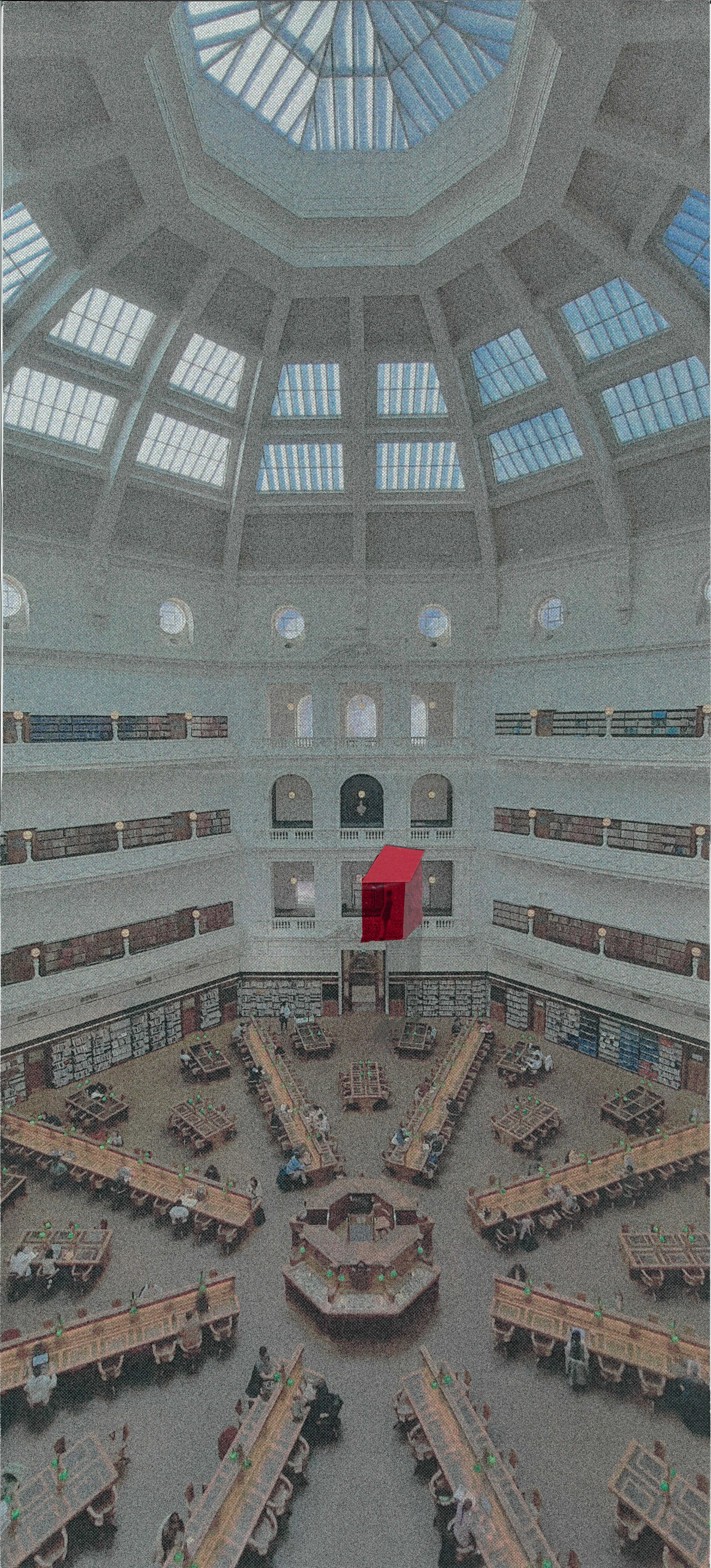
perspective from dome room

presentation on site

presentation on site
